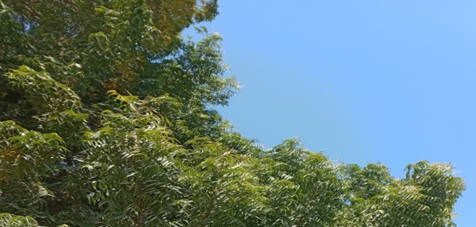Antioxidant Properties of Azadirachta Indica Leave Extracts
Abstract
 Abstract Views: 0
Abstract Views: 0
Background: Azadirachta Indica is an important medicinal plant commonly found in India, Africa, America, Europe, and many other regions of the world. The current study was designed to investigate the concentrations of important phenolic/flavonoid contents of ethanolic extracts of Azadirachta Indica (neem) leaves (Lahore, Pakistan).
Methods: High-performance liquid chromatography (HPLC) analysis revealed the presence of three phenolic compounds (gallic acid, sinapic acid, and caffeic acid) and two flavonols (Myricetin and Kaempferol). The plant extract contained the highest and lowest concentrations of myricetin acid (26.41µg/g) and kaempferol (3.35µg/g) among flavonols, respectively.
Results: Both acids are helpful in the manufacturing of antioxidant medicines. Among phenolics, sinapic acid (45.73µg/g) and gallic acid (1.96µg/g) were present in highest and lowest concentrations in plant leaves, respectively.
Conclusion: Gallic acid, sinapic acid, caffeic acid, myricetin, and kaempferol possess antioxidant and therapeutic potential and are highly beneficial for human health. Human beings can get many benefits and produce more medicines from the leaf extract of neem in the future. Many more advantages can also be taken from different parts of neem (leaves, seeds, and bark).
Downloads
References
Anwar R, Hussain S, Abid MA, Ahmad M, Javed M, Pervaiz M. Pharmacological and Phytochemical Potential of Aleo Barbadensis (A Comprehensive Review). LGU J Life Sci. 2022;6(02):107–123. https://doi. org/10.54692/lgujls.2022.0602212
Javed M, Bibi R, Nazir K, Hussain S. Phytochemistry of Ziziphus Mauritiana; its Antioxidant and Antimicrobial Potential. Adv Life Sci. 2022;9(2):157–162.
Hussain S, Tanvir M, Ahmad M, Munawar KS. Phytochemical Composition of Mint (Mentha), its Nutritional and Pharmacological Potential. LGU J Life Sci. 2021;5(04):241–258. https://doi.org/ 10.54692/lgujls.2021.0504188
Hussain S, Javed M, Abid MA, et al. Prunus Avium L.; Phytochemistry, Nutritional and Pharmacological Review. Adv Life Sci. 2021;8(4):307–314.
Hussain S, Rehman A, Shahid M, Riaz M, Batool I. Evaluation of Thrombolytic Potential of Elaeagnus rhamnoides (L.) A. Nelson. Sci Inq Rev. 2022;6(3):94–110. https://doi. org/10.32350/sir.63.06
Mahmood N, Muazzam MA, Ahmad M, Hussain S, Javed W. Phytochemistry of Allium cepa L.(Onion): An Overview of its Nutritional and Pharmacological Importance. Sci Inq Rev. 2021;5(3):41–59. https://doi.org/ 10.32350/sir.53.04
Del Serrone P, Nicoletti M. Antimicrobial activity of a neem cake extract in a broth model meat system. Int J Environ Res Public Health. 2013;10(8):3282–3295. https://doi. org/10.3390/ijerph10083282
Asif M. Antimicrobial potential of Azadirachta indica against pathogenic bacteria and fungi. J Pharmacogn phytochem. 2012;1(4):78–83.
Alves PD, Brandão MG, Nunan EA, Vianna-Soares CD. Chromatographic evaluation and antimicrobial activity of Neem (Azadirachta indica A. Juss., Meliaceae) leaves hydroalcoholic extracts. Rev Bras Farmacogn. 2009;19:510–515. https://doi.org/ 10.1590/S0102-695X2009000400001
Susmitha S, Vidyamol K, Ranganayaki P, Vijayaragavan R. Phytochemical extraction and antimicrobial properties of Azadirachta indica (Neem). Glob J Pharmacol. 2013;7(3):316–320. https://doi.org/10.5829/idosi.gjp.2013.7.3.1107
Kohanski MA, Dwyer DJ, Collins JJ. How antibiotics kill bacteria: from targets to networks. Nat Rev Microbiol. 2010;8(6):423–435. https://doi.org/10.1038/nrmicro2333
Hegde V, Kesaria DP. Comparative evaluation of antimicrobial activity of neem, propolis, turmeric, liquorice and sodium hypochlorite as root canal irrigants against E. faecalis and C. albicans–An in vitro study. Endodontology. 2013;25(2):38–45. https://doi.org/10.4103/0970-7212.352328
Islas JF, Acosta E, Zuca G, et al. An overview of Neem (Azadirachta indica) and its potential impact on health. J Funct Foods. 2020;74:e104171. https://doi.org/ 10.1016/j.jff.2020.104171
Krishnan Y, Wong N. Cytotoxicity and antimicrobial properties of neem (Azadirachta indica) leaf extracts. Int J Pharm Pharm Sci. 2015;7(2):179–82.
Raut RR, Sawant AR, Jamge BB. Antimicrobial activity of Azadirachta indica (Neem) against pathogenic microorganisms. J Acad Ind Res. 2014;3(7):327–329.
Fatima A, Malik T, Ibrahim I, Nadeem SG. 17. Phytochemical screening and antibacterial activity of neem extracts on uropathogens. Pure App Bio (PAB). 2020;9(1):148-153. https://www .thepab.org/index.php/journal/article/view/1130
Ilango K, Maharajan G, Narasimhan S. Anti-nociceptive and anti-inflammatory activities of Azadirachta indica fruit skin extract and its isolated constituent azadiradione. Nat Prod Res. 2013;27(16):1463–1467. https:// doi.org/10.1080/14786419.2012.717288
Akpuaka A, Ekwenchi M, Dashak D, Dildar A. Biological activities of characterized isolates of n-hexane extract of Azadirachta indica A. Juss (Neem) leaves. Nat Sci. 2013;11(5):141–147.
Parida M, Upadhyay C, Pandya G, Jana A. Inhibitory potential of neem (Azadirachta indica Juss) leaves on dengue virus type-2 replication. J Ethnopharmacol. 2002;79(2):273–278. https://doi.org/10.1016/S0378-8741(01)00395-6
Butt SZ, Hussain S, Munawar KS, Tajammal A, Muazzam MA. Phytochemistry of Ziziphus Mauritiana; its Nutritional and Pharmaceutical Potential. Sci Inq Rev. 2021;5(2):1–15. https://doi.org/ 10.32350/sir/52.01
Hussain S, Sajjad A, Butt SZ, Muazzam MA. An Overview of antioxidant and pharmacological potential of common fruits. Sci Inq Rev. 2021;5(1):1–18. http://dx.doi.org/10.32350/sir.51.01
Riaz S, Hussain S, Syed SK, Anwar R. Chemical Characteristics and Therapeutic Potentials of Aloe vera. RADS J Biol Res App Sci. 2021;12(2):160–166. https://doi. org/10.37962/jbas.v12i1.279
Ramirez JE, Zambrano R, Sepúlveda B, Simirgiotis MJ. Antioxidant properties and hyphenated HPLC-PDA-MS profiling of Chilean Pica mango fruits (Mangifera indica L. Cv. piqueño). Molecules. 2014;19(1):438–458. https://doi.org/10. 3390/molecules19010438
Stankovic MS, Niciforovic N, Topuzovic M, Solujic S. Total phenolic content, flavonoid concentrations and antioxidant activity, of the whole plant and plant parts extracts from Teucrium montanum L. var. montanum, f. supinum (L.) Reichenb. Biotechnol Biotechnol Equip. 2011;25(1):2222–2227. https://doi.org/10.5504/BBEQ. 2011.0020
Braca A, Sortino C, Politi M, Morelli I, Mendez J. Antioxidant activity of flavonoids from Licania licaniaeflora. J Ethnopharmacol 2002;79(3):379–381. https://doi.org/10.1016/S0378-8741(01)00413-5
Yaqoob N, Munir H, Aslam F, et al. Antioxidant Potential and Phenolic Contents of Various Flaxseed Cultivars from Different Agro-Industrial Regions. Pol J Environ Stud. 2021;30(5):4325–4330. https://doi. org/10.15244/pjoes/132795
Hussain S, Mirza W, Murtaza M, Nazir A, Hanif I, Ahmad M. Sources and Chemistry of Flavonoids: An Overview of their Biological and Therapeutic Potential. Sci Inq Rev. 2022;6(2):32–58. https://doi.org /10.32350/sir.62.03
Panche AN, Diwan AD, Chandra SR. Flavonoids: an overview. J Nutr Sci. 2016;5:e47. https://doi.org/10. 1017/jns.2016.41
Decker EA. Phenolics: prooxidants or antioxidants? Nutr Rev. 1997;55(11):396–398. https://doi.org /10.1111/j.1753-4887.1997.tb01580.x
Imran M, Saeed F, Hussain G, et al. Myricetin: A comprehensive review on its biological potentials. Food Sci Nutr. 2021;9(10):5854–5868. https://doi. org/10.1002/fsn3.2513
Song X, Tan L, Wang M, et al. Myricetin: A review of the most recent research. Biomedicine & Pharmacotherapy. 2021;134:e111017. https://doi.org/10.1016/j.biopha.2020.111017
Jose J, Dhanya A, Haridas KR, et al. Structural characterization of a novel derivative of myricetin from Mimosa pudica as an anti-proliferative agent for the treatment of cancer. Biomed Pharmacot. 2016;84:1067–1077. https://doi.org/10.1016/j.biopha.2016.10.020
Devi KP, Malar DS, Nabavi SF, et al. Kaempferol and inflammation: From chemistry to medicine. Pharmacol Res. 2015;99:1–10. https://doi.org/10. 1016/j.phrs.2015.05.002
M Calderon-Montano J, Burgos-Morón E, Pérez-Guerrero C, López-Lázaro M. A review on the dietary flavonoid kaempferol. Mini-Rev Med Chem. 2011;11(4):298–344. https://doi.org/10.2174/138955711795305335
Nićiforović N, Abramovič H. Sinapic acid and its derivatives: natural sources and bioactivity. Compr Rev Food Sci Food Saf. 2014;13(1):34–51. https://doi.org/10.1111/1541-4337.12041
Chen C. Sinapic acid and its derivatives as medicine in oxidative stress-induced diseases and aging. Oxid Med Cell Longev. 2016;2016:e3571614. https://doi.org/1 0.1155/2016/3571614
John CM, Arockiasamy S. Sinapic acid prevents adipogenesis by regulating transcription factors and exerts an anti-ROS effect by modifying the intracellular anti-oxidant system in 3T3-L1 adipocytes. Iran J Basic Med Sci. 2022;25(5):611–620. https://doi.org/10.22038%2FIJBMS.2022.62590.13847
Mirzaei S, Gholami MH, Zabolian A, et al. Caffeic acid and its derivatives as potential modulators of oncogenic molecular pathways: New hope in the fight against cancer. Pharmacol Res. 2021;171:e105759. https://doi.org/10.1016/j.phrs.2021.105759
Alam M, Ahmed S, Elasbali AM, et al. Therapeutic implications of caffeic acid in cancer and neurological diseases. Front Oncol. 2022;12:e860508. https://doi.org /10.3389/fonc.2022.860508
Subramanian A, John A, Vellayappan M, et al. Gallic acid: prospects and molecular mechanisms of its anticancer activity. Rsc Adv. 2015;5(45):35608–35621. https://doi. org/10.1039/C5RA02727F
Wang H, Provan GJ, Helliwell K. Determination of hamamelitannin, catechins and gallic acid in witch hazel bark, twig and leaf by HPLC. J Pharmaceutic Biomed Anal. 2003;33(4):539–544. https://doi.org/ 10.1016/S0731-7085(03)00303-0
Lu J, Wei Y, Yuan Q. Preparative separation of gallic acid from Chinese traditional medicine by high-speed counter-current chromatography and followed by preparative liquid chromatography. Sep Purif Technol. 2007;55(1):40–43. https://doi.org/ 10.1016/j.seppur.2006.10.022
Borde V, Pangrikar P, Tekale S. Gallic acid in Ayurvedic herbs and formulations. Rec Res Sci Technol. 2011;3(7):51–54.
Gutiérrez-del-Río I, Villar CJ, Lombó F. Therapeutic uses of kaempferol: anticancer and anti-inflammatory activity. Biosynthesis, Food Sources and Therapeutic Uses. In: T. Garde-Cerdan and A.G. Diago, eds. 2016;15(2):71–99.
Sultana B, Anwar F, Przybylski R. Antioxidant activity of phenolic components present in barks of Azadirachta indica, Terminalia arjuna, Acacia nilotica, and Eugenia jambolana Lam. trees. Food Chem. 2007;104(3):1106–1114. https://doi. org/10.1016/j.foodchem.2007.01.019

Copyright (c) 2024 Dr Shabbir Hussain, Maleeha Hafeez, Muhammad Riaz, Shazma Massey, Amina Asghar, Atif Javed

This work is licensed under a Creative Commons Attribution 4.0 International License.
BSR follows an open-access publishing policy and full text of all published articles is available free, immediately upon publication of an issue. The journal’s contents are published and distributed under the terms of the Creative Commons Attribution 4.0 International (CC-BY 4.0) license. Thus, the work submitted to the journal implies that it is original, unpublished work of the authors (neither published previously nor accepted/under consideration for publication elsewhere). On acceptance of a manuscript for publication, a corresponding author on the behalf of all co-authors of the manuscript will sign and submit a completed the Copyright and Author Consent Form.









